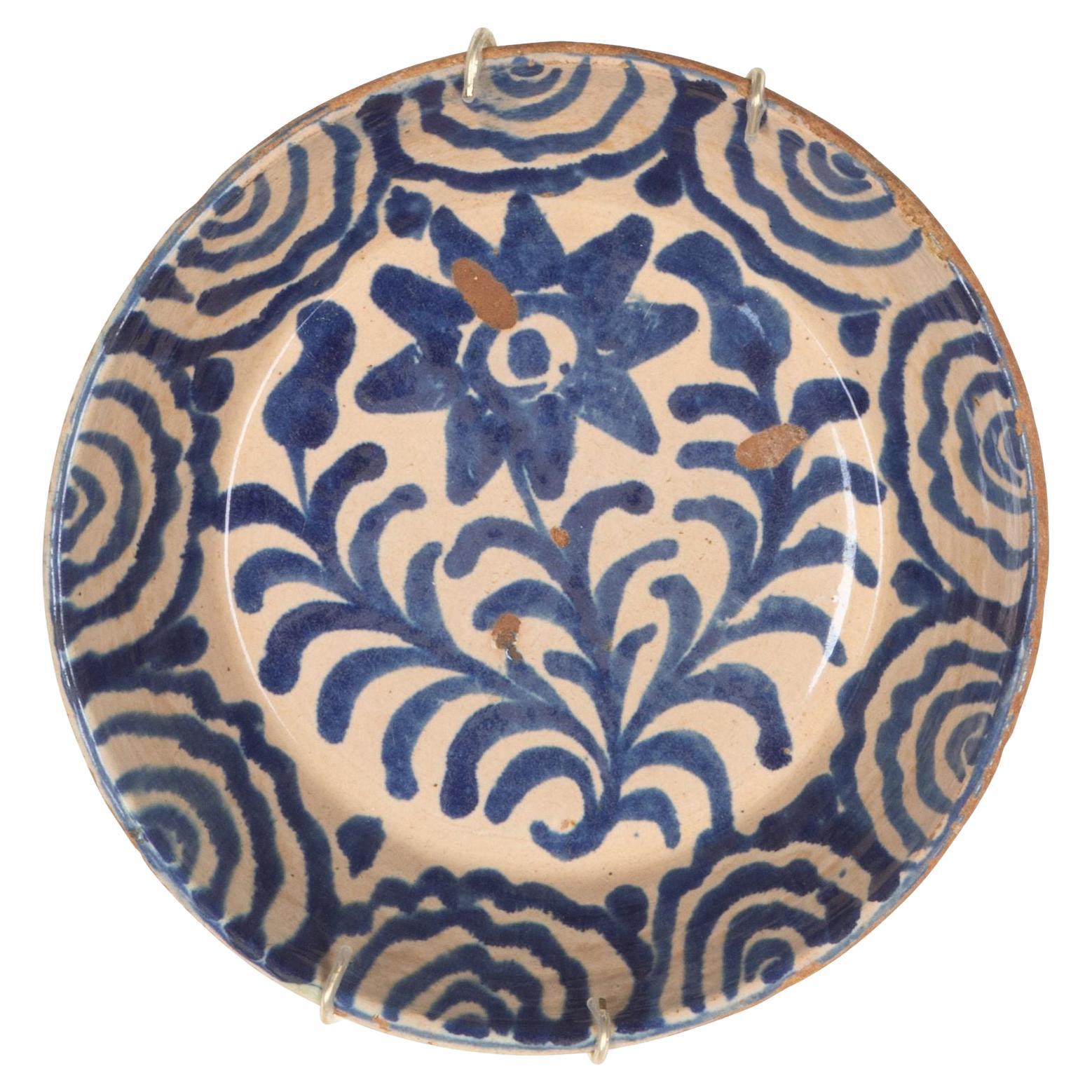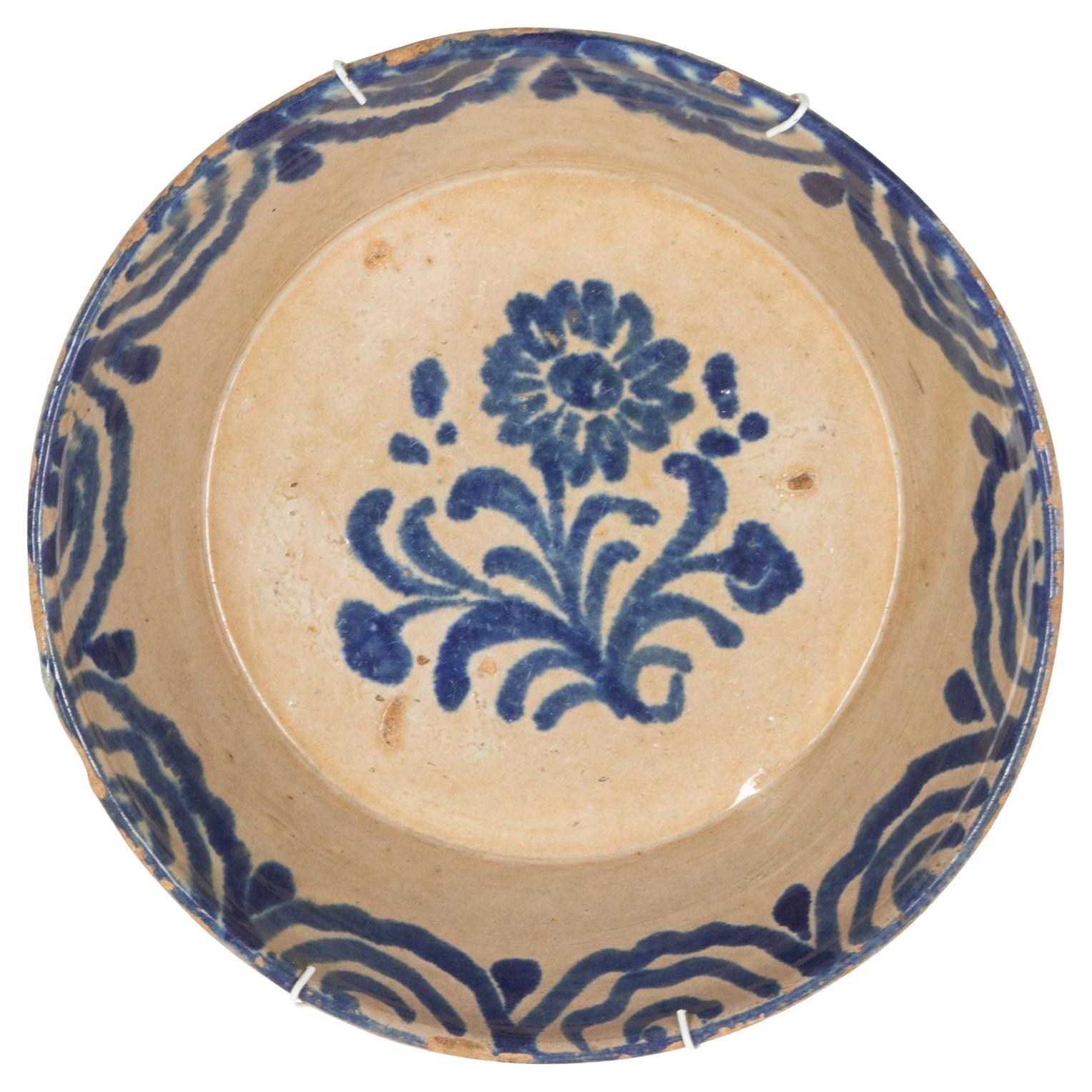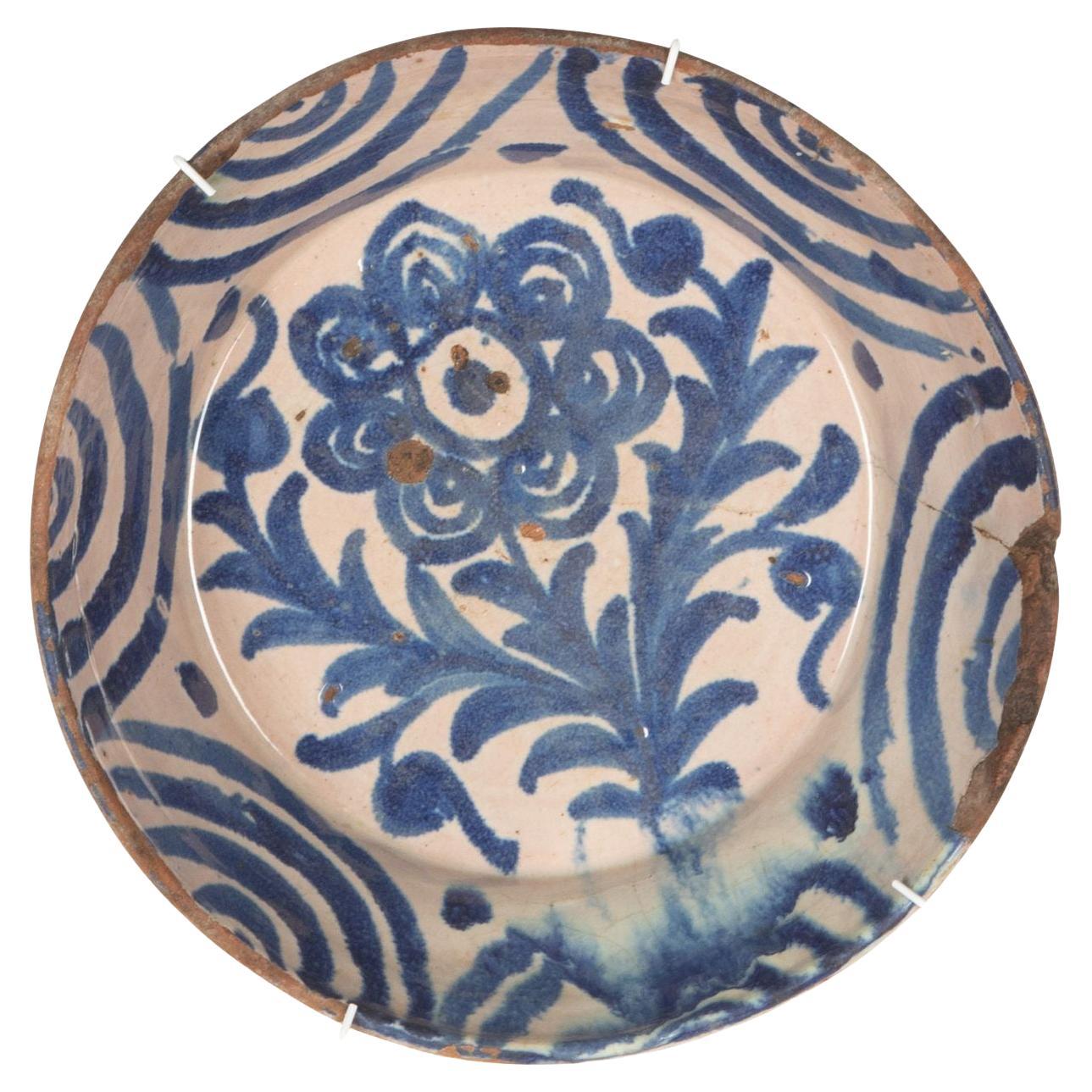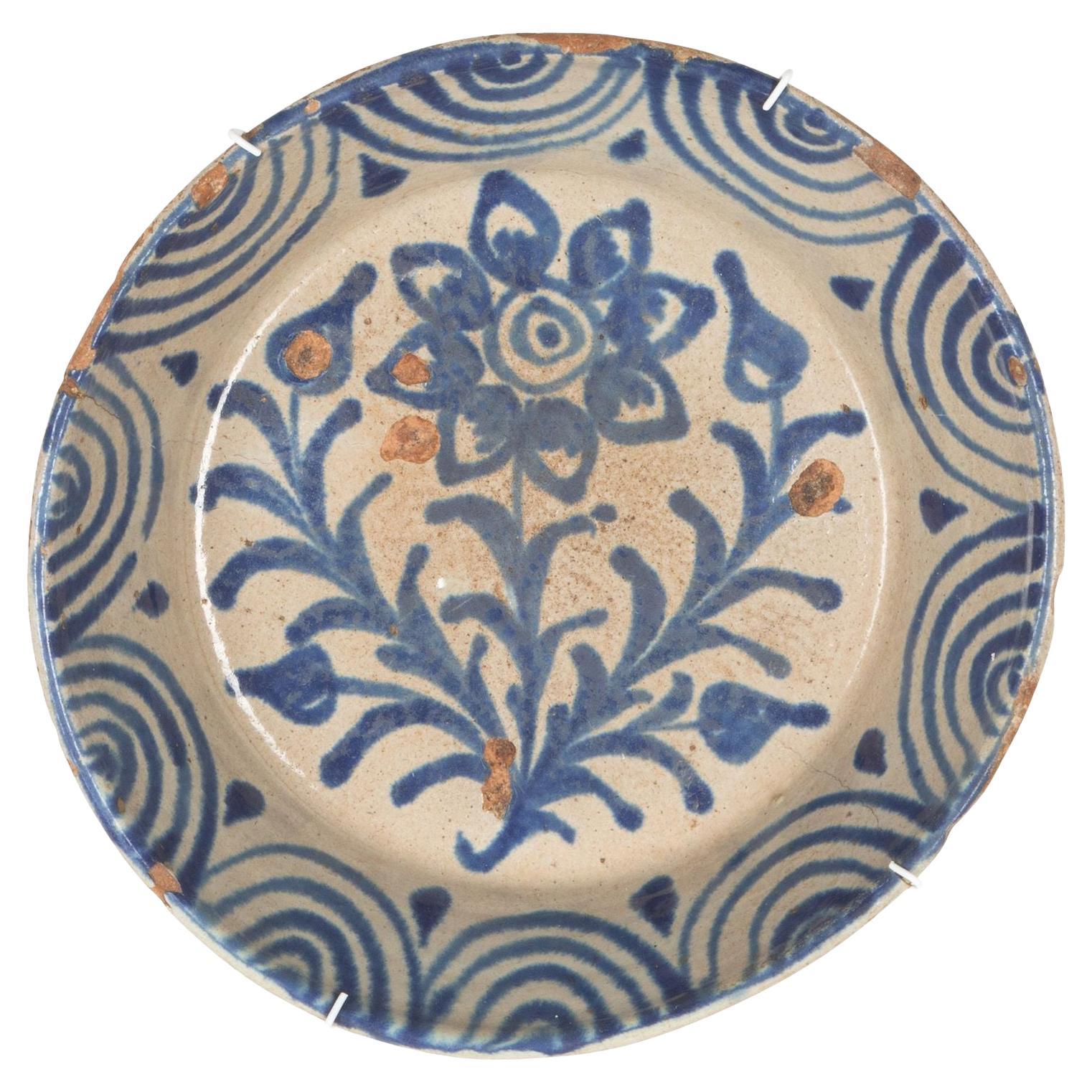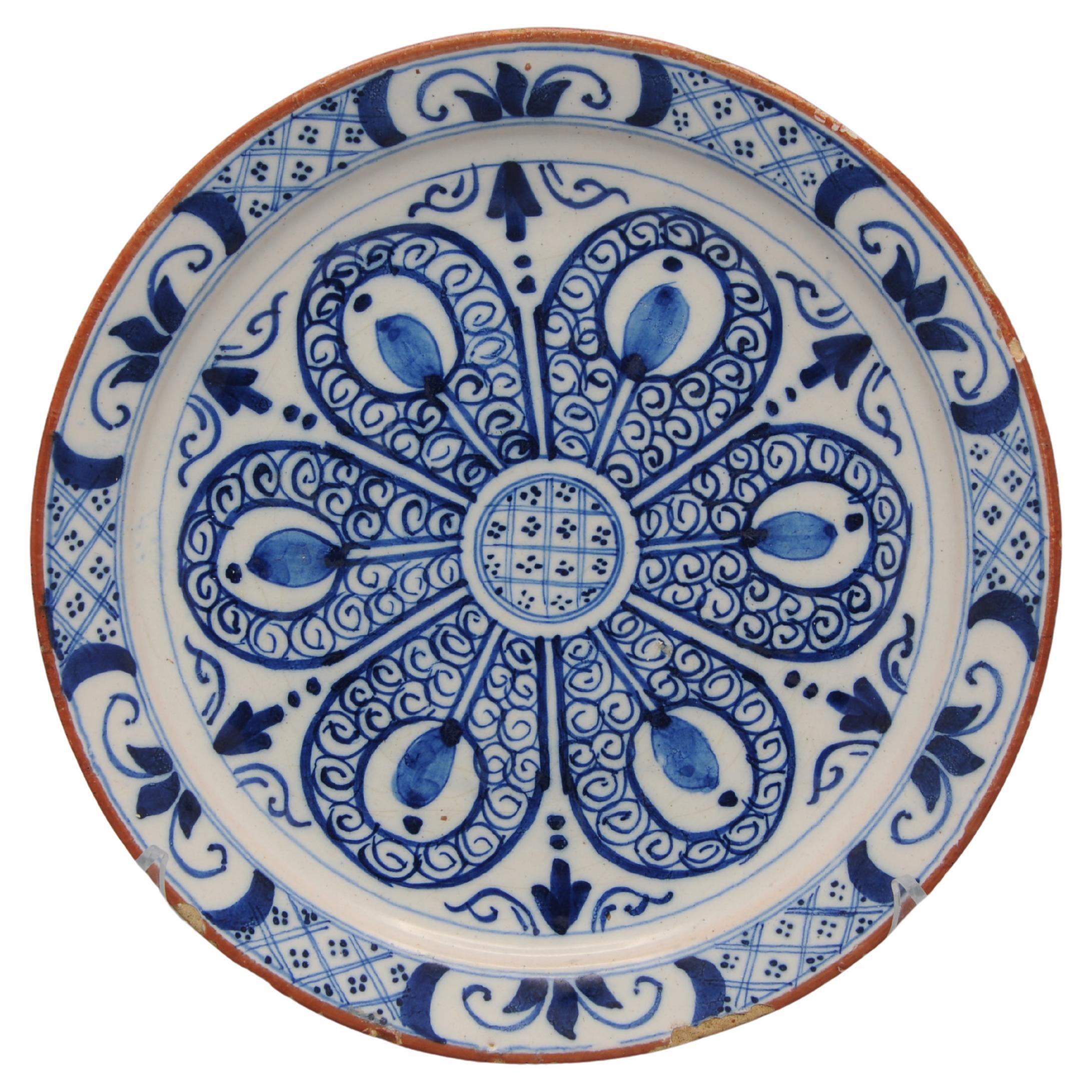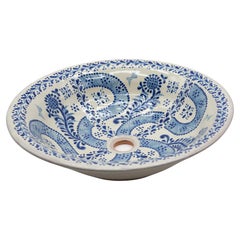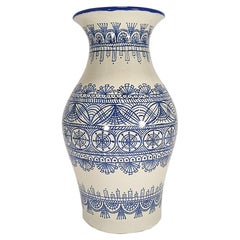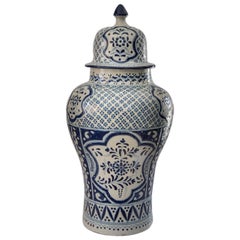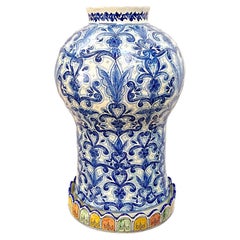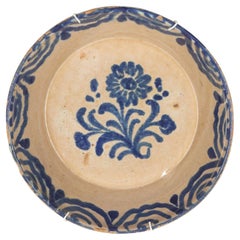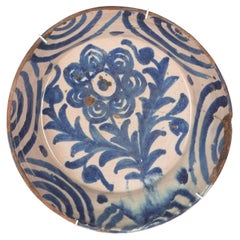Items Similar to Authentic Talavera Decorative Plate Folk Art Vessel Mexican Ceramic Blue White
Want more images or videos?
Request additional images or videos from the seller
1 of 6
Authentic Talavera Decorative Plate Folk Art Vessel Mexican Ceramic Blue White
$400
$50020% Off
£305.82
£382.2820% Off
€352.24
€440.3120% Off
CA$560.52
CA$700.6520% Off
A$625.77
A$782.2120% Off
CHF 327.89
CHF 409.8720% Off
MX$7,660.05
MX$9,575.0620% Off
NOK 4,164.26
NOK 5,205.3320% Off
SEK 3,926.37
SEK 4,907.9620% Off
DKK 2,628.84
DKK 3,286.0420% Off
Shipping
Retrieving quote...The 1stDibs Promise:
Authenticity Guarantee,
Money-Back Guarantee,
24-Hour Cancellation
About the Item
Elegant white and blue plate made with the Talavera technique. Artist, Cesar Torres portraits the colonial art of Mexico.
The Talavera is not just a simple painted ceramic: its exquisite decoration is the product of a delicate process of alchemy that translates into fine enamels. In Puebla, Mexico few people still produce using Talavera with the ancestral techniques.
One of those few is Cesar Torres, Don Cesar learned his art in the workshop of the Uriarte family, an excellent workshop where his grandfather worked. In his creations he uses the black and white mud that is obtained from the nearby hills of Loreto and Guadalupe, and colors of mineral origin that he creates in his workshop with recipes from his grandfather.
All the pieces are modeled in a traditional way and go through a production process that usually takes from one to two months, between drying, burning, and painting.
Being surrounded by a living tradition, Cesar Torres Jr., learned from his father since childhood. Architect by profession, Cesar Jr. has come to revolutionize and modernize with new designs and ideas of the current world, nevertheless always respecting the tradition of the processes and materials that make Talavera a Creole art.
To this day, father and son together join forces to unite their ideas and leave both tradition and contemporary ideas in an ancestral art.
This piece has been crafted with natural clays and enamels, always conserving the traditional, method dating back to the 19th century. Handmade by master artisan Cesar Torres in Puebla, Mexico
Talavera's history:
Originates in Baghdad in the 9th century. The Arabs with the desire to imitate the Chinese ceramic that came to that area, discover this ingenious technique. They transported to Spain during the invasion of the moors and subsequently set roots in Mexico with the Spanish conquest in the 16th century.
- Creator:Cesar (Artist)
- Dimensions:Height: 17.33 in (44 cm)Width: 13.39 in (34 cm)Depth: 2.76 in (7 cm)
- Style:Spanish Colonial (In the Style Of)
- Materials and Techniques:
- Place of Origin:
- Period:
- Date of Manufacture:circa 2010
- Production Type:New & Custom(One of a Kind)
- Estimated Production Time:4-5 weeks
- Condition:
- Seller Location:Queretaro, MX
- Reference Number:1stDibs: LU3057329452242
About the Seller
4.9
Vetted Professional Seller
Every seller passes strict standards for authenticity and reliability
Established in 2017
1stDibs seller since 2017
118 sales on 1stDibs
Typical response time: 1 hour
- ShippingRetrieving quote...Shipping from: Puebla , Mexico
- Return Policy
Authenticity Guarantee
In the unlikely event there’s an issue with an item’s authenticity, contact us within 1 year for a full refund. DetailsMoney-Back Guarantee
If your item is not as described, is damaged in transit, or does not arrive, contact us within 7 days for a full refund. Details24-Hour Cancellation
You have a 24-hour grace period in which to reconsider your purchase, with no questions asked.Vetted Professional Sellers
Our world-class sellers must adhere to strict standards for service and quality, maintaining the integrity of our listings.Price-Match Guarantee
If you find that a seller listed the same item for a lower price elsewhere, we’ll match it.Trusted Global Delivery
Our best-in-class carrier network provides specialized shipping options worldwide, including custom delivery.More From This Seller
View AllTalavera Decorative Lavabo Sink Folk Art Mexican Ceramic Blue White
By Cesar
Located in Queretaro, Queretaro
Elegant white and blue sink lavabo made with the Talavera technique. Artist, Cesar Torres portraits the colonial art of Mexico.
The Talavera is not just a simple painted ceramic: its exquisite decoration is the product of a delicate process of alchemy that translates into fine enamels. In Puebla, Mexico few people still produce using Talavera with the ancestral techniques.
One of those few is Cesar Torres, Don Cesar...
Category
21st Century and Contemporary Mexican Spanish Colonial Ceramics
Materials
Ceramic, Clay, Majolica
Authentic Talavera Decorative Vase Folk Art Vessel Mexican Ceramic Blue White
By Cesar
Located in Queretaro, Queretaro
Elegant white and blue vase made with the Talavera technique. Artist, Cesar Torres portraits the colonial art of Mexico.
The Talavera is not just a simple painted ceramic: its exquisite decoration is the product of a delicate process of alchemy that translates into fine enamels. In Puebla, Mexico few people still produce using Talavera with the ancestral techniques.
One of those few is Cesar Torres, Don Cesar learned his art in the workshop of the Uriarte family, an excellent workshop where his grandfather worked. In his creations he uses the black and white mud that is obtained from the nearby hills of Loreto and Guadalupe, and colors of mineral origin that he creates in his workshop with recipes from his grandfather.
All the pieces are modeled in a traditional way and go through a production process that usually takes from one to two months, between drying, burning, and painting.
Being surrounded by a living tradition, Cesar Torres Jr., learned from his father since childhood. Architect by profession, Cesar Jr. has come to revolutionize and modernize with new designs and ideas of the current world, nevertheless always respecting the tradition of the processes and materials that make Talavera a Creole art...
Category
21st Century and Contemporary Mexican Spanish Colonial Ceramics
Materials
Ceramic, Clay, Majolica
Authentic Talavera Decorative Vase Folk Art Vessel Mexican Ceramic Blue White
Located in Queretaro, Queretaro
Elegant white and blue vessel made with the Talavera technique. Artist, Cesar Torres portraits the colonial art of Mexico.
The Talavera is not just a simple painted ceramic: its exquisite decoration is the product of a delicate process of alchemy that translates into fine enamels. In Puebla, Mexico few people still produce using Talavera with the ancestral techniques.
One of those few is Cesar Torres, Don Cesar learned his art in the workshop of the Uriarte family, an excellent workshop where his grandfather worked. In his creations he uses the black and white mud that is obtained from the nearby hills of Loreto and Guadalupe, and colors of mineral origin that he creates in his workshop with recipes from his grandfather.
All the pieces are modeled in a traditional way and go through a production process that usually takes from one to two months, between drying, burning, and painting.
Being surrounded by a living tradition, Cesar Torres Jr., learned from his father since childhood. Architect by profession, Cesar Jr. has come to revolutionize and modernize with new designs and ideas of the current world, nevertheless always respecting the tradition of the processes and materials that make Talavera a Creole art...
Category
21st Century and Contemporary Mexican Spanish Colonial Ceramics
Materials
Clay, Ceramic, Majolica
Talavera Jar Decorative Vase Folk Art Vessel Mexican Ceramic Blue White
By Cesar
Located in Queretaro, Queretaro
Elegant white and blue jar made with the authentic Talavera technique. Master artisan, Cesar Torres portraits the colonial art of Mexico.
The Talavera is not just a simple painted ceramic: its exquisite decoration is the product of a delicate process of alchemy that translates into fine enamels. In Puebla, Mexico few people still produce using Talavera with the ancestral techniques.
One of those few is Cesar Torres, Don Cesar...
Category
21st Century and Contemporary Mexican Spanish Colonial Ceramics
Materials
Ceramic, Clay, Majolica
Talavera Decorative Lavabo Sink Folk Art Mexican Ceramic Spanish Colonial
By Cesar
Located in Queretaro, Queretaro
Elegant surrealist sink lavabo made with the Talavera technique. Artist, Cesar Torres portraits the colonial art of Mexico. The Spanish colonial style sink is a perfect piece to bring personality and light to bathrooms and restrooms. Its warm colors bring light to the piece, creating a cozy effect in the atmosphere where it is placed.
The Talavera is not just a simple painted ceramic: its exquisite decoration is the product of a delicate process of alchemy that translates into fine enamels. In Puebla, Mexico few people still produce using Talavera with the ancestral techniques.One of those few is Cesar Torres, Don Cesar...
Category
21st Century and Contemporary Mexican Spanish Colonial Ceramics
Materials
Ceramic, Clay, Majolica
Talavera Mural Azulejo Tile Folk Contemporary Mexican Ceramic Blue White Mosaic
By Cesar
Located in Queretaro, Queretaro
This contemporary azulejo tile forms a mosaic perfect for kitchen decorations or any exterior space. Made with the Talavera technique. Artist, Cesar Torres portraits the colonial art of Mexico, but this time with a contemporary touch. This wall decoration can be arranged to fit specific spaces or simply hanged as a painting on the wall.
The Talavera is not just a simple painted ceramic: its exquisite decoration is the product of a delicate process of alchemy that translates into fine enamels. In Puebla, Mexico few people still produce using Talavera with the ancestral techniques.
One of those few is Cesar Torres, Don Cesar learned his art in the workshop of the Uriarte family, an excellent workshop where his grandfather worked. In his creations he uses the black and white mud that is obtained from the nearby hills of Loreto and Guadalupe, and colors of mineral origin that he creates in his workshop with recipes from his grandfather.
All the pieces are modeled in a traditional way and go through a production process that usually takes from one to two months, between drying, burning, and painting.
Being surrounded by a living tradition, Cesar Torres Jr., learned from his father since childhood. Architect by profession, Cesar Jr. has come to revolutionize and modernize with new designs and ideas of the current world, nevertheless always respecting the tradition of the processes and materials that make Talavera a Creole art...
Category
21st Century and Contemporary Mexican Spanish Colonial Ceramics
Materials
Ceramic, Clay, Majolica
You May Also Like
Oversized Blue and White Mexican Talavera Glazed Ceramic Bowl
By Talavera de la Reyna
Located in North Hollywood, CA
Authentic oversized very fine blue and white Mexican Talavera de la Reina glazed ceramic bowl.
Huge blue and white Mexican Talavera pottery handcrafte...
Category
Late 20th Century Mexican Folk Art Decorative Bowls
Materials
Ceramic
Late 19th Century Spanish Blue and White Fajalauza Bowl
Located in Tetbury, Gloucestershire
Late 19th Century Spanish blue and white Fajalauza pottery bowl from Granada.
Circa 1880.
Category
Antique 19th Century Spanish Pottery
Materials
Terracotta
$435 Sale Price
20% Off
Late 19th Century Spanish Blue and White Fajalauza Bowl
Located in Tetbury, Gloucestershire
Late 19th Century Spanish blue and white Fajalauza pottery bowl from Granada.
Circa 1880.
Category
Antique 19th Century Spanish Pottery
Materials
Terracotta
$435 Sale Price
20% Off
Late 19th Century Spanish Blue and White Fajalauza Bowl
Located in Tetbury, Gloucestershire
Late 19th Century Spanish blue and white Fajalauza pottery bowl from Granada.
Circa 1880.
Category
Antique 19th Century Spanish Pottery
Materials
Terracotta
$435 Sale Price
20% Off
Late 19th Century Spanish Blue and White Fajalauza Bowl
Located in Tetbury, Gloucestershire
Late 19th Century Spanish blue and white Fajalauza pottery bowl from Granada.
Circa 1880.
Category
Antique 19th Century Spanish Pottery
Materials
Terracotta
$435 Sale Price
20% Off
Delft - Blue and white plate with rare geometric decoration - 18th century
By Delft
Located in DELFT, NL
Blue Delft blue and white plate with a rare geometric decoration of a central 6 lobbed star.
Condition: some usual wear, minor chipping to the rim.
Unmarked, mid half 18th century
Category
Antique Mid-18th Century Dutch Chinoiserie Delft and Faience
Materials
Earthenware, Delft, Faience
More Ways To Browse
Authentic Models
Mexican Ceramics
Mexico Plate
Colonial Spanish Art
Mexican Colonial
19th Century Mexican Furniture
Mexican Colonial Furniture
Spanish Blue Ceramics
Mexico Enamel
Blue Ceramic Plates
Black Clay Plate
19th Century Spanish Ceramic
Chinese Clay Vessel
Mexican Clay Vessels
Mexican Spanish Colonial Furniture
Black Ceramic Plates
Fine China Plates Blue
Hand Made Ceramic Black Plates

